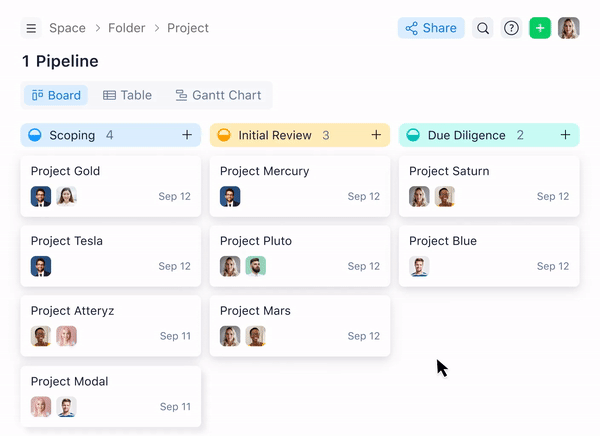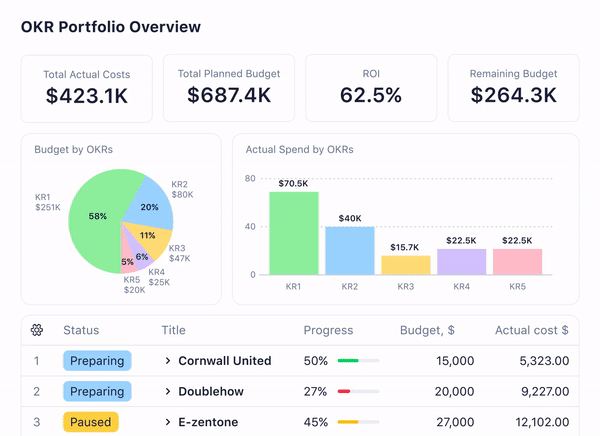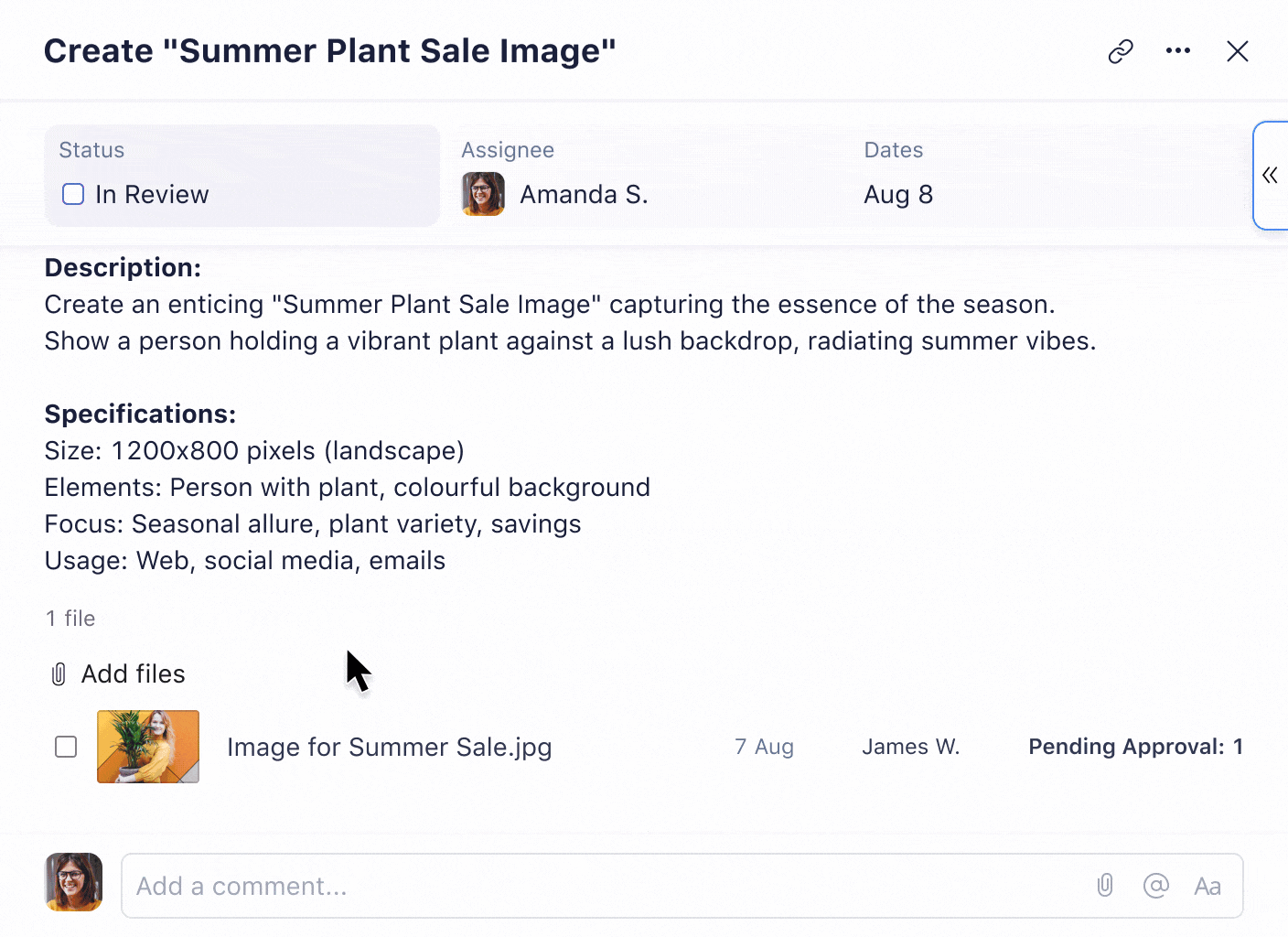Key takeaways:
- What is a project pipeline? It is a framework in project portfolio management that tracks all project stages, ensuring clear communication and planning.
- How can I enhance collaboration? Use project management tools like Wrike to facilitate real-time communication and updates among team members.
- What are the key stages of project pipeline management? The five stages are Ideation, Planning, Execution, Monitoring, and Closure.
- How do I identify and resolve bottlenecks? Regular team meetings and project management tools can help pinpoint issues and facilitate open communication.
- Why is data important in project management? Gathering and analyzing data from projects helps identify trends, inform decisions, and improve future outcomes.
It’s a typical workday afternoon. You’re at your desk sorting through your priorities. Your inbox is brimming with updates about various stages of the projects you’re managing. A stakeholder stops by, looking for advice on how to handle a bottleneck in their segment of the pipeline. What do you do first?
Managing a project pipeline simplifies the flow of projects in any business, big or small. Every decision can influence the success of multiple projects. You may be wondering:
- How do you allocate resources?
- How do you enhance collaboration?
- How do you build your project workflow?
- How do you ensure everyone is on the same page?
Fear not! This guide will explore strategies for streamlining your project pipeline, enhancing collaboration, and applying best practices. You’ll also learn how to use project management software that allows you to visualize progress and track project completion.
Plan and execute your projects in Wrike — start your free trial now.
Project pipeline meaning
What is a project pipeline? Your project pipeline is an aspect of project portfolio management that shows every step your projects go through, from start to finish. Why is this important? Simple! It helps everyone stay on the same page. Whether you’re a project manager, a team member, or even a stakeholder, understanding the project pipeline keeps surprises to a minimum and planning at its peak.
Project pipeline management involves many moving parts — project stages, project goals, you name it! But with the right tools, you can streamline your workflow so that project progress is never left to chance. Now, talking about tools, there are a variety of project management software platforms out there. These tools help you visualize what’s happening, track the progress of each project, and ensure that no detail is overlooked.
Key components
When diving into project pipeline management, there are a few components to consider. Here’s what counts:
- Set clear project goals, objectives, and deliverables.
- Monitor your project as it moves through different phases, such as planning, execution, monitoring, and closure.
- Assign the right tasks to the right people.
- Conduct risk assessment and have contingency plans ready.
- Establish clear lines of communication between project stakeholders.
5 stages of project pipeline management
How can your team turn project ideas into tangible results? Not every project takes the same path, but almost every project goes through five key stages. Let’s break down these stages that make up a typical project management pipeline:
1. Ideation
This is where you brainstorm new ideas. For example, you can create a formal presentation to pitch a project or gather the team to discuss potential project ideas. The key is to identify a viable project and get everyone on board.
2. Planning
This involves creating a roadmap and outlining the tasks using a project management tool. In the planning stage, you assign roles and responsibilities to each team member.
3. Execution
This is where the action happens! The execution stage requires task management so that everything moves according to plan. In this phase, you bring all your team members together to collaborate and share progress.
4. Monitoring and control
Here, you monitor project progress using tools that provide a visual representation of progress. You monitor timelines, budgets, and work quality, making adjustments as needed to ensure everything aligns with the initial plan.
5. Closure
Finally, the closure stage wraps everything up. This is also the time for regular team meetings to provide feedback on what went well and what could be improved.
Steps to streamline your project pipeline
What if you could make your project pipeline run even smoother? Find out how by following these steps:
Identify bottlenecks in your current process
Start by reviewing your current project management process. Where do things tend to pile up? Maybe it’s when approvals are needed, or when certain resources are in short supply. It could be anywhere from the planning stage to the project delivery phase.
Regular team meetings can be a goldmine for this kind of bottleneck. Ask your team: Where do they hit snags? What frustrates them the most? Effective communication and collaboration help bring hidden issues to light and show you where the real problems lie.
- Is it a resource issue?
- Or lack of human resources?
- Or a matter of project proposals sitting too long before approval?
Using a project management tool can also assist you in visualizing where these bottlenecks are occurring. For example, Wrike has Kanban boards that oversee your workflow and allow you to track your project progress with a single glance.
Implement project management tools
One of the biggest perks of using a project management tool is visibility. These tools give you a bird’s-eye view of your entire project pipeline. You can see your project in progress and the status of each task within those projects.
For example, project management tools like Wrike help you observe trends, identify patterns, and predict future outcomes of your entire project portfolio with analytics boards. Everything from project planning and execution to project delivery is laid out clearly. This board shows you what’s on track and what needs attention, so it’s easier to make data-driven decisions and adjust resources as needed.

Prioritize projects for maximum efficiency
Every project should have clear project goals. What are you aiming to achieve?
- Do you want to launch a new product?
- Boost your sales pipeline?
- Improve your service offerings?
Having a clear end goal helps prioritize which projects will deliver the biggest impact on your overall objectives. Use insight from past projects and current data to assess each project’s impact.
Look at your project budget and team availability to decide if you have the necessary resources. It’s about matching the number of projects with team capacity. Don’t overload — allocate wisely!
Best practices for project pipeline management
What are the secrets to making every project flow from concept to completion? Follow these best practices to enhance your project pipeline management process.
Regularly review and update your pipeline
Establish a regular timeline for reviews — weekly, monthly, or quarterly. Consistency helps you adapt to changing environments and ensures your project management process remains agile. This review process brings in diverse insights that can lead to better decision making.
After assessing the insights, update your pipeline accordingly. This could mean shifting project timelines, introducing new project ideas, or even halting projects that no longer align with strategic goals. Documenting these changes makes it easier to maintain a record of why decisions were made, which is important for future planning and accountability.
Encourage team communication and collaboration
Use project management tools that promote collaboration. Encourage a culture where feedback is welcomed and valued. Whether through formal project reviews or casual conversations, feedback helps refine processes and ideas, guaranteeing the best project outcomes.
Wrike offers real-time commenting and document-sharing features. Team members can attach files directly to multiple tasks, comment freely, and receive notifications about updates without leaving the platform. This feature eliminates the delays and confusion often accompanying email exchanges and ensures everyone can access important information.

Use data for informed decision making
Start by collecting data from every phase of your projects. Tools that automate data gathering can save you a ton of time here. The more data you have, the clearer the picture.
Look for patterns or trends in the data.
- Does a certain type of project always get delayed at the same stage?
- Are there common bottlenecks that you can prepare for next time?
Analyzing this data can provide insights that inform your future strategies.
Finally, use data to create effective feedback loops. What worked? What didn’t? Let the data tell the story and share these findings with your team. This helps everyone learn and grow from each project, continually improving your processes.
Overcoming challenges in project pipeline management
Managing and streamlining your project pipeline has its challenges. Let’s explore some common obstacles and how to overcome them.
Dealing with resource constraints
Resources — whether time, money, or manpower — are never quite enough, are they? This challenge requires creativity and strategic planning. You need to prioritize projects based on their impact and resource requirements. Also, don’t forget to communicate these limitations clearly to your team so everyone understands the constraints and can work within them.
Managing multiple projects simultaneously
Handling multiple projects at once is the norm these days, but it can get overwhelming. The main challenge is keeping all projects moving forward without dropping any. This is where a solid project pipeline tracker shines. The key here is effective project tracking — knowing what’s completed, what’s in progress, and what needs a nudge.
Set up regular check-ins to review project status and address potential bottlenecks or conflicts. By effectively managing multiple projects, you can ensure that each project progresses smoothly and stays on track.
Nail your next project in Wrike
Project pipeline management is not a solo sport; it’s all about teamwork. Keeping everyone in the loop is essential for achieving project success. It’s straightforward — simply bring your teams together with project management tools to manage the various stages of your workflow.
With Wrike, you can even set up custom workflows that reflect your project’s unique processes, automatically ensuring that everyone knows the next steps without manual intervention. For example, you can set up notifications for when tasks are completed or at risk or automate task assignments based on specific triggers. This saves time, reduces the likelihood of human error, and increases efficiency.
Everybody was really positive about Wrike because almost everybody was using two or three systems each, and it gets exhausting for people. So, telling them you can do all the same stuff in relatively the same way, in one place — they were pretty excited about that ... It’s nice to be able to say, ’Pretty much everyone works in Wrike. This is the process, no matter what department you’re submitting a request to.’
Courtnie McKone, Project Manager
Ready to stay ahead of potential issues and keep your projects running smoothly? Start your free trial of Wrike today!




